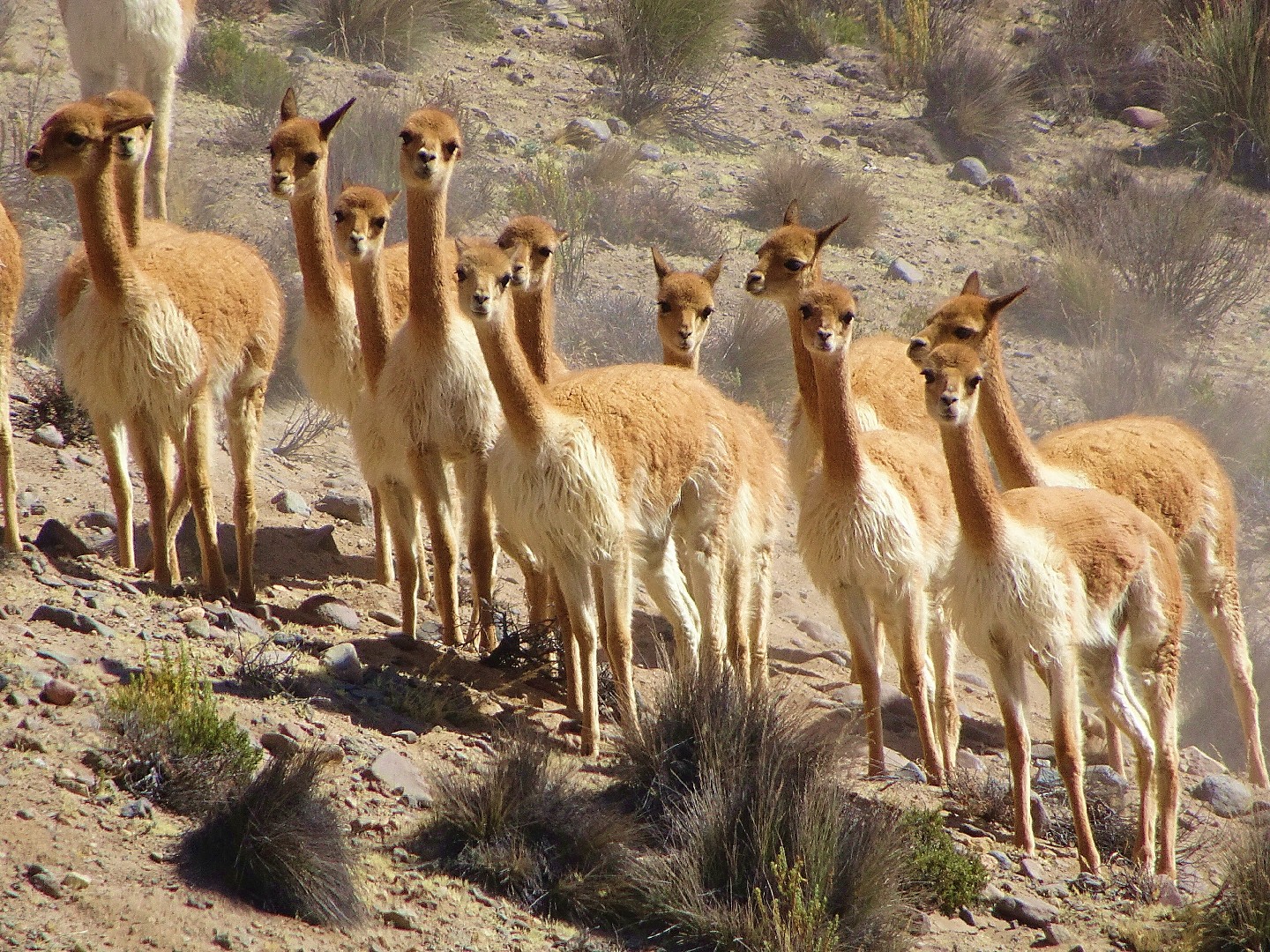Vicuña
A species of Vicugna, Also known as Wild alpaca Scientific name : Vicugna vicugna Genus : Vicugna
Vicuña, A species of Vicugna
Also known as:
Wild alpaca
Scientific name: Vicugna vicugna
Genus: Vicugna
Content
Description General Info
 Photo By Marshallhenrie , used under CC-BY-SA-4.0 /Cropped and compressed from original
Photo By Marshallhenrie , used under CC-BY-SA-4.0 /Cropped and compressed from original Description
The vicuña is considered more delicate and graceful than the guanaco, and smaller. A key distinguishing element of morphology is the better-developed incisor roots for the guanaco. The vicuña's long, woolly coat is tawny brown on the back, whereas the hair on the throat and chest is white and quite long. The head is slightly shorter than the guanaco's and the ears are slightly longer. The length of head and body ranges from 1.45 to 1.60 m (about 5 ft); shoulder height is from 75 to 85 cm (around 3 ft); its weight is from 35 to 65 kg (under 150 lb). It falls prey to Culpeos. To prevent poaching, a round-up is held every year, and all vicuñas with fur longer than 2.5 cm are shorn. 
General Info
Lifespan
15-20 years
Diet
Vicuña' are primarily herbivorous, subsisting mainly on a diet of various grasses and herbaceous plants. Their dry, high-altitude habitats contribute to their preference for hardy, fibrous vegetation, while their efficient digestive systems enable them to thrive in such challenging environments.
Appearance
Vicuña is a small camelid, featuring a slender body covered in a fine, dense coat. Its coat is primarily brown or fawn in color, often lighter on the underparts. A characteristic of vicuña is their straight, smooth hair extending from the belly to the knee region. They have small, pointed ears and no horns or humps. Both sexes look alike, with no significant differences in appearance.
Behavior
Vicuña is observed to be highly social, living in family-based groups with a dominant male, a harem of females, and their young. They display unique spitting behavior when threatened. Mainly grazing on grass, they migrate seasonally between high and low elevations, maintaining territories typically near water sources. They have adapted to survive extreme mountain climates.
Population
Increasing